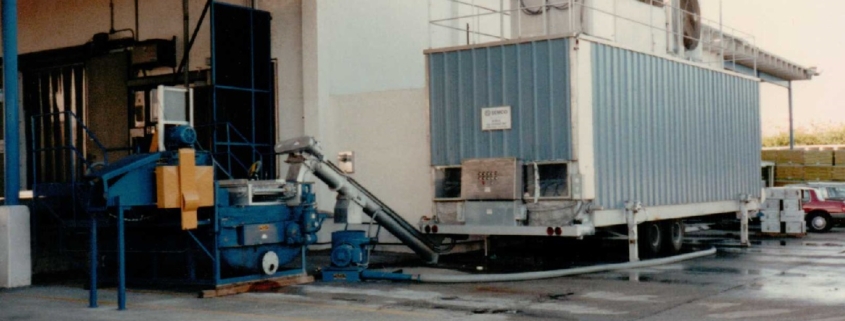Cooling Methods for Eggplants After Harvest
Eggplants play an important culinary role in stews, sauces, and other dishes throughout the world and across many different cultures and styles of cuisine. They are renowned for their own complex, rich flavor as well as their ability to absorb the flavor and juices of the foods they are cooked in. For best results though it is important to start with a fresh, healthy eggplant, and that begins with proper cooling and storing methods after harvest. Check out these facts about eggplants, factors that affect eggplant quality, and proper eggplant cooling methods.
General Facts About Eggplants
Eggplants are believed to have been a part of the human diet since before recorded history. Two distinct varieties of eggplants were first cultivated in Asia, one in South Asia and one in East Asia. The first known recorded reference to an eggplant occurs in a Chinese text from around the year 544 AD. Eggplants are known for their characteristic rich, purple color and indeed this color is itself often referred to as “eggplant” or “aubergine,” another name by which eggplants are called. However, eggplants come in a variety of colors besides purple. Some eggplants are yellow, white, green, reddish purple, or even black. Some eggplants even display a color gradient along their length.
The term “eggplant” is believed to have developed in Europe in the 18th century to refer to a white variety whose elongated egg shape was similar to that of a goose’s or hen’s egg. The plant’s scientific family name, melongena, derives from the archaic English meaning mad or insane apple. Botanically the eggplant is considered a berry. It is a member of the Solanaceae, or nightshade family, and is thus a distant relative of the tomato and potato. Because of its relation to nightshade it was once believed to be quite poisonous and upon handling eggplant some people may indeed exhibit an allergic reaction in the form of itchy skin or mouth, headache, or upset stomach.
General Information About Cooling and Storing Eggplants
Eggplants have a relatively short viable shelf life. To maximize quality and shelf life it is important to follow all cooling and storage guidelines. The following are several key points about eggplant cooling and storage.
Temperature – Eggplants should be stored at a temperature of about 46°F to 54°F. This may seem rather warm compared to many types of produce and that, combined with the eggplant’s already short shelf life, may tempt people to store eggplants at a lower temperature. However, this should be avoid because eggplants are highly sensitive to chill damage below 46°F. Chill damage will hasten decay and reduce taste and quality.
Respiration – Eggplants continue to respire after they have been picked, thereby releasing heat in the process. This heat should be controlled by proactive cooling methods to prevent rapid decay.
Relative Humidity – For maximum freshness and quality eggplants should be stored at a relative humidity of about 90% to 95%.
Ethylene Sensitivity – Like tomatoes, eggplants exhibit ethylene sensitivity which will hasten ripening and decay. Eggplants are considered moderate to highly sensitivity to ethylene. As such they should not be stored with other ethylene-producing fruits or vegetables, and an eggplant past its prime should quickly be removed and separated from the others.
Shelf Life – Eggplants have a storage shelf life of about one to two weeks, but very rarely over 14 days.
Methods of Cooling Eggplants
The following are effective methods of cooling eggplants.
Hydrocooling – Hydrocooling is a very effective technique for removing field heat and rapidly lowering the eggplant’s temperature to near safe levels. Hydrocooling involves submerging the eggplants in near freezing water.
Room Cooling – Room cooling involves merely placing the eggplants in a refrigerated room such as a cooler and allowing them to gradually acclimate to ambient temperatures. This is often effective, particularly after hydrocooling precooling, since eggplants do not need to be stored at excessively low temperatures. However, it is important that they fully reach proper storage temperature.
Forced-Air Cooling – Forced-air cooling involves placing the eggplants around a fan and pulling cool air through them, thereby forcing air movement and more rapidly cooling them. This is effective to ensure that they reach the desired storage temperature quickly.
SEMCO/SEMCOLD LLC manufacturers and installs industry-leading cooling and storage equipment. Our systems are ideal for use with eggplants and other produce. We will custom-build each of our systems to ensure that it is uniquely suited to meet the needs of each of our clients. Our priority is in helping our clients get the most value and quality from their eggplant or other produce harvest. Please contact us for more information.


